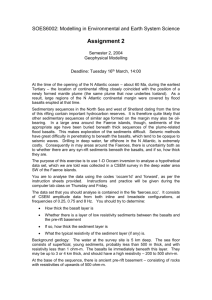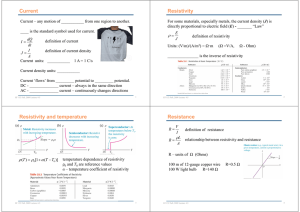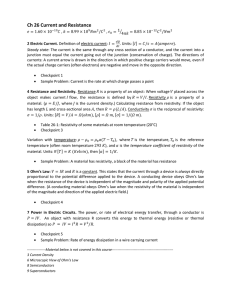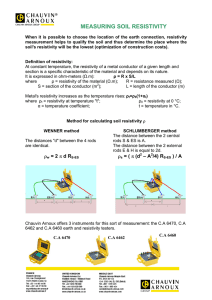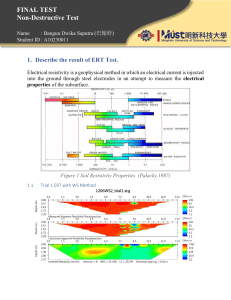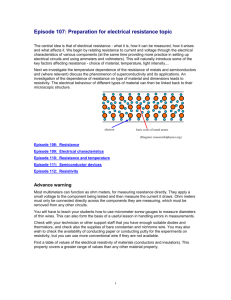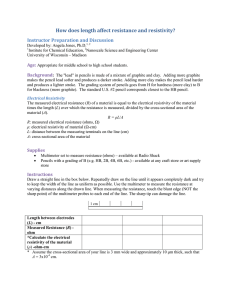Resistivity Results
advertisement
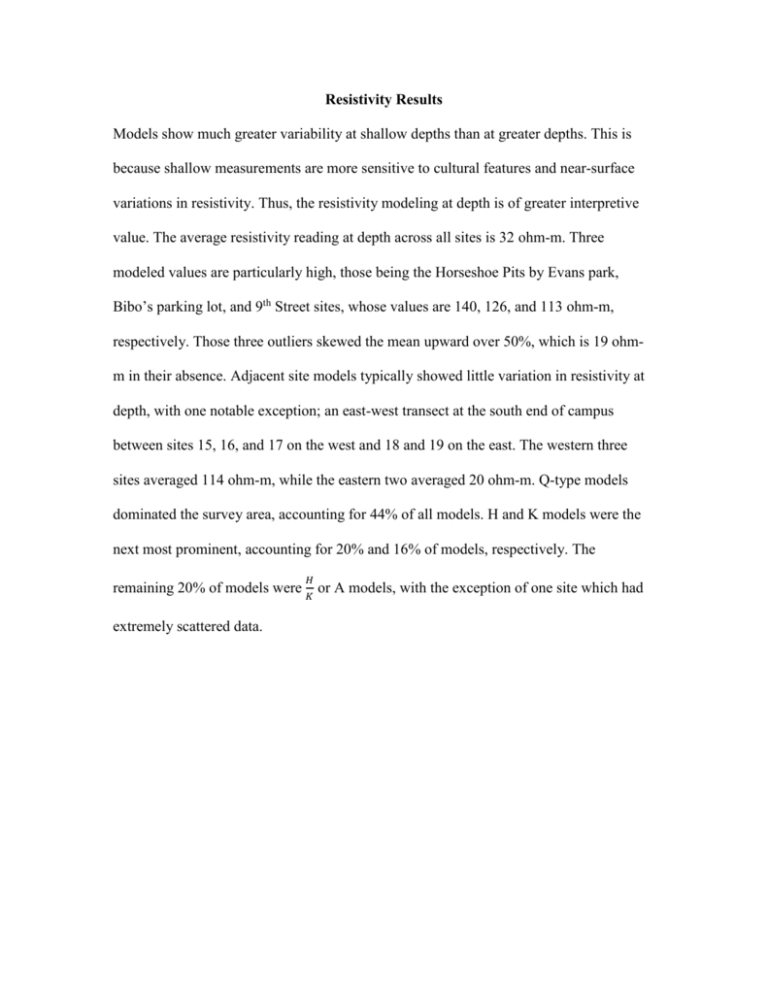
Resistivity Results Models show much greater variability at shallow depths than at greater depths. This is because shallow measurements are more sensitive to cultural features and near-surface variations in resistivity. Thus, the resistivity modeling at depth is of greater interpretive value. The average resistivity reading at depth across all sites is 32 ohm-m. Three modeled values are particularly high, those being the Horseshoe Pits by Evans park, Bibo’s parking lot, and 9th Street sites, whose values are 140, 126, and 113 ohm-m, respectively. Those three outliers skewed the mean upward over 50%, which is 19 ohmm in their absence. Adjacent site models typically showed little variation in resistivity at depth, with one notable exception; an east-west transect at the south end of campus between sites 15, 16, and 17 on the west and 18 and 19 on the east. The western three sites averaged 114 ohm-m, while the eastern two averaged 20 ohm-m. Q-type models dominated the survey area, accounting for 44% of all models. H and K models were the next most prominent, accounting for 20% and 16% of models, respectively. The 𝐻 remaining 20% of models were 𝐾 or A models, with the exception of one site which had extremely scattered data.


